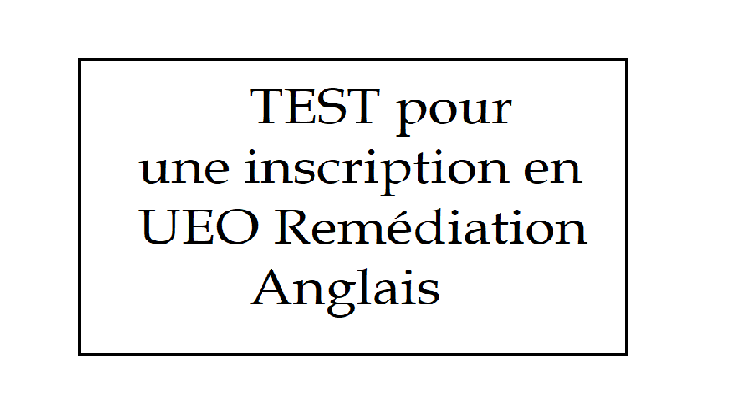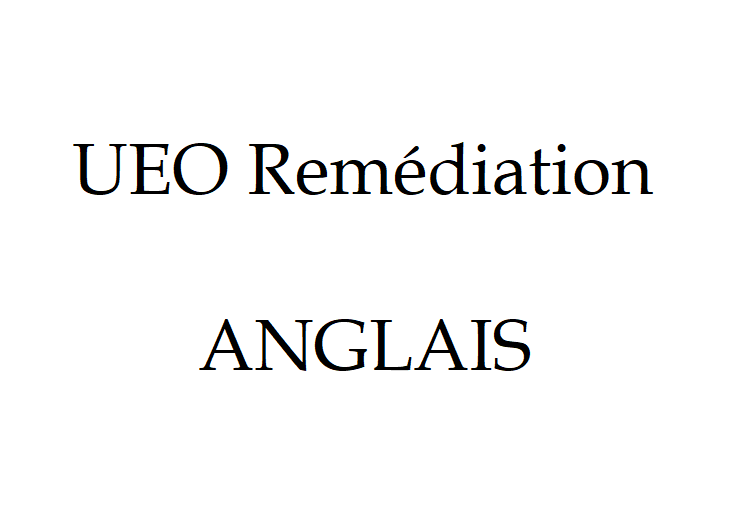
Ce cours est ouvert aux étudiants L2 LEA parcours CI, dispensés et en cours magistral durant le 1er semestre.
- Teacher: Marie-Laure Le Berrigaud
MCC écrit, en anglais. Questions de cours (50%) et analyse d'une oeuvre (50%) contrôle continu
Claudia Desblaches
Maître de conferences
claudia.desblaches@univ-rennes2.fr
UEO L2 semestre 3 Arts and Sciences
This class which evaluates interest in arts and sciences will introduce you to a chronology of the links between sciences, arts and literature from the 15th century to our contemporary era. Analogies and differences, divisions and the limits of such a gap between arts and sciences will be brought to the fore. We will also deal with the notion of hybridity that is implied by their interconnection. What are the implications for the artist who makes scientific tools his own? Does it help scientific discoveries to be recognized? Why would a scientist read the world through artistic lenses? Can we mention the idea of scientific aesthetics?
classes 1 and 2: Exploration of the historical links and codependence between arts and sciences
Outline for classes 1 and 2:
Historical connections
Art during the Middle Ages
Art and Science during the Middle ages
Anatomy in art during the Renaissance
Painting during the Renaissance
Cabinets of curisosity
The 19th Century: division or fusion?
Ernst Haeckel: fusion
Another organic link between art and science: music
From the 1960’s to 1990 towards the acceleration of fusion between art and science
21st century: unexpected links
Codependence between arts and sciences
Bibliography
Wilson Stephen, Art et Science, Thames and Hudson, 2010
Sicard M Chercheurs/Artistes, entre art et science, ils rêvent le monde, 1995
Fourmentraux, JP Art et Internet, les nouvelles figures de la création, 2010
Francastel, Art et technique au 19ième 20 ième siècles, 1988
Lévy-Leblond, La science n’est pas l’art, 2010.
Allmendinger, Ulli. 2001. « One Small Hop for Alba, One Large Hop for Mankind. » NY Arts Magazine, vol. 6, 6, juin.
Andrews, Lori. 2000. « Art : Weird Science. » Chicago Magazine, août, p. 22-24.
Baron, Denis. 2008. La chair mutante, fabrique d’un posthumain. Paris: Éditions Dis Voir.
Benjamin, Walter. 2012. L'œuvre d'art à l'époque de sa reproductibilité technique. Paris: Éditions Allia.
Brooklyn Museum. 2014. « Some More Beginnings: Experiments in Art and Technology (E.A.T.). » Press Release, Brooklyn Museum. Consulté le Octobre 12. https://www.brooklynmuseum.org/opencollection/exhibitions/1095.
Daubner, Ernestine. 2005. « Hybrides culturels : biofictions, biocyborgs et agents artificiels. » In Art et biotechnologies, sous la direction de Ernestine Daubner, et Louise Poissant, 17-42. Sainte-Foy: Presses de l’Université du Québec.
E.A.T., Experiments in Art and Technology : A Brief History and Summary of Major Projects, 1966-1998. 1998. http://www.vasulka.org/archive/Writings/EAT.pdf.
Faucon, Térésa. 2014. La théorie du montage : énergie, forces et fluides. Paris: Armand Colin.
Feuillie, Nicolas, dir. 2002. Fluxus dixit : une anthologie, vol. 1. Dijon: Presses du Réel.
Hauser, Jens, dir. 2003. L'art biotech. Nantes: Filigranes éditeur.
Houdebine, Louis-Marie. 2014. « GFP Bunny : Trying to Get the Story Straight. Consulté le Octobre 18. http://idlabirag.beepworld.de/in_english.htm
Kac, Eduardo. 2003. « Transformation du vivant : mutation de l'art ». In L'art Biotech, sous la direction de Jens Hauser, 33-45. Nantes: Filigranes éditeur.
Kaprow, Allan, Robert Watts, et George Brecht. (1958) 2002. « Project in Multiples Dimensions, 1958. » In Fluxus dixit : une anthologie, sous la direction de Nicolas Feuillie, vol. 1., 113-126. Dijon: Presses du Réel.
Karhausen, Lucien R. 2011. Les flux de la Philosophie des Sciences au 20ème siècle. Paris: L’Harmattan.
Klüver, Billy, et Robert Rauschenberg. 1967. « Experiments in Art and Technology. » E.A.T. News 1 (2) : s/p. http://www.vasulka.org/archive/Writings/EAT.pdf.
Laval-Jeantet, Marion. 2010. (Nouvelles questions) [courrier électronique]. Destinataire : Camille Prunet. 29 novembre 2010. Communication personnelle. Inédite.
Mitchell, William J., Alan S. Inouye, et Marjory S. Blumenthal. 2003. Beyond Productivity :Information Technology, Innovation, and Creativity. Washington DC: The National Academies Press.
Naimark, Michael. 2003. « Truth, Beauty, Freedom, and Money Technology-Based Art and the Dynamics of Sustainability» . http://rtmark.com/more/articles/naimarkarticle.pdf.
Poissant, Louise. 2005. « L’art de réinventer la vie. » In Art et biotechnologies, sous la direction de Ernestine Daubner, et Louise Poissant, 1-16. Sainte-Foy: Presses de l’Université du Québec: Publications de l'Université de Saint-Etienne.
Popper, Frank. 2002. « L’art transgénique d’Eduardo Kac. » Artpress, 276, février.
Simondon, Gilbert. 2012. Du mode d’existence des objets techniques. Paris: Aubier.
Claudia Desblaches
Maître de conferences
claudia.desblaches@univ-rennes2.fr
UEO L2 semestre 3 Arts and Sciences
This class which evaluates interest in arts and sciences will introduce you to a chronology of the links between sciences, arts and literature from the 15th century to our contemporary era. Analogies and differences, divisions and the limits of such a gap between arts and sciences will be brought to the fore. We will also deal with the notion of hybridity that is implied by their interconnection. What are the implications for the artist who makes scientific tools his own? Does it help scientific discoveries to be recognized? Why would a scientist read the world through artistic lenses? Can we mention the idea of scientific aesthetics?
classes 1 and 2: Exploration of the historical links and codependence between arts and sciences
Outline for classes 1 and 2:
Historical connections
Art during the Middle Ages
Art and Science during the Middle ages
Anatomy in art during the Renaissance
Painting during the Renaissance
Cabinets of curisosity
The 19th Century: division or fusion?
Ernst Haeckel: fusion
Another organic link between art and science: music
From the 1960’s to 1990 towards the acceleration of fusion between art and science
21st century: unexpected links
Codependence between arts and sciences
Bibliography
Wilson Stephen, Art et Science, Thames and Hudson, 2010
Sicard M Chercheurs/Artistes, entre art et science, ils rêvent le monde, 1995
Fourmentraux, JP Art et Internet, les nouvelles figures de la création, 2010
Francastel, Art et technique au 19ième 20 ième siècles, 1988
Lévy-Leblond, La science n’est pas l’art, 2010.
Allmendinger, Ulli. 2001. « One Small Hop for Alba, One Large Hop for Mankind. » NY Arts Magazine, vol. 6, 6, juin.
Andrews, Lori. 2000. « Art : Weird Science. » Chicago Magazine, août, p. 22-24.
Baron, Denis. 2008. La chair mutante, fabrique d’un posthumain. Paris: Éditions Dis Voir.
Benjamin, Walter. 2012. L'œuvre d'art à l'époque de sa reproductibilité technique. Paris: Éditions Allia.
Brooklyn Museum. 2014. « Some More Beginnings: Experiments in Art and Technology (E.A.T.). » Press Release, Brooklyn Museum. Consulté le Octobre 12. https://www.brooklynmuseum.org/opencollection/exhibitions/1095.
Daubner, Ernestine. 2005. « Hybrides culturels : biofictions, biocyborgs et agents artificiels. » In Art et biotechnologies, sous la direction de Ernestine Daubner, et Louise Poissant, 17-42. Sainte-Foy: Presses de l’Université du Québec.
E.A.T., Experiments in Art and Technology : A Brief History and Summary of Major Projects, 1966-1998. 1998. http://www.vasulka.org/archive/Writings/EAT.pdf.
Faucon, Térésa. 2014. La théorie du montage : énergie, forces et fluides. Paris: Armand Colin.
Feuillie, Nicolas, dir. 2002. Fluxus dixit : une anthologie, vol. 1. Dijon: Presses du Réel.
Hauser, Jens, dir. 2003. L'art biotech. Nantes: Filigranes éditeur.
Houdebine, Louis-Marie. 2014. « GFP Bunny : Trying to Get the Story Straight. Consulté le Octobre 18. http://idlabirag.beepworld.de/in_english.htm
Kac, Eduardo. 2003. « Transformation du vivant : mutation de l'art ». In L'art Biotech, sous la direction de Jens Hauser, 33-45. Nantes: Filigranes éditeur.
Kaprow, Allan, Robert Watts, et George Brecht. (1958) 2002. « Project in Multiples Dimensions, 1958. » In Fluxus dixit : une anthologie, sous la direction de Nicolas Feuillie, vol. 1., 113-126. Dijon: Presses du Réel.
Karhausen, Lucien R. 2011. Les flux de la Philosophie des Sciences au 20ème siècle. Paris: L’Harmattan.
Klüver, Billy, et Robert Rauschenberg. 1967. « Experiments in Art and Technology. » E.A.T. News 1 (2) : s/p. http://www.vasulka.org/archive/Writings/EAT.pdf.
Laval-Jeantet, Marion. 2010. (Nouvelles questions) [courrier électronique]. Destinataire : Camille Prunet. 29 novembre 2010. Communication personnelle. Inédite.
Mitchell, William J., Alan S. Inouye, et Marjory S. Blumenthal. 2003. Beyond Productivity :Information Technology, Innovation, and Creativity. Washington DC: The National Academies Press.
Naimark, Michael. 2003. « Truth, Beauty, Freedom, and Money Technology-Based Art and the Dynamics of Sustainability» . http://rtmark.com/more/articles/naimarkarticle.pdf.
Poissant, Louise. 2005. « L’art de réinventer la vie. » In Art et biotechnologies, sous la direction de Ernestine Daubner, et Louise Poissant, 1-16. Sainte-Foy: Presses de l’Université du Québec: Publications de l'Université de Saint-Etienne.
Popper, Frank. 2002. « L’art transgénique d’Eduardo Kac. » Artpress, 276, février.
Simondon, Gilbert. 2012. Du mode d’existence des objets techniques. Paris: Aubier.
- Teacher: Claudia Desblaches
Ce cours fait le point sur la variété des publics et la diversité des situations d’apprentissage
en France et dans les pays étrangers. Il s’attache aussi à rendre compte de l’organisation
politique et institutionnelle de l’enseignement du FLE et de la diversité des objectifs de
formation. Des comptes rendus d’expériences de professionnels, ou de dispositifs particuliers
permettent de prendre en compte la spécificité des différents secteurs de formation impliqués
dans ce champ d’enseignement.
en France et dans les pays étrangers. Il s’attache aussi à rendre compte de l’organisation
politique et institutionnelle de l’enseignement du FLE et de la diversité des objectifs de
formation. Des comptes rendus d’expériences de professionnels, ou de dispositifs particuliers
permettent de prendre en compte la spécificité des différents secteurs de formation impliqués
dans ce champ d’enseignement.
- Teacher: Gilles Prevot
- Teacher: Dolly Ramella Georget
- Teacher: Elisabeth Richard

Ce cours propose en 4 séances de 2h une approche de l'environnement et du paysage en tant que phénomène esthétique, c'est-à-dire comme objet de perception sensible.
On survolera d'abord l'évolution de la représentation du paysage en peinture et en littérature depuis l'antiquité jusqu'à l'époque romantique.
On étudiera ensuite la relation spécifique des artistes romantiques allemands à la nature, qui associe sans les opposer analyse scientifique et sensibilité artistique, quête individuelle et revendication collective. On s'intéressera en particulier à deux types de patriotisme du paysage: national et supranational.
On examinera enfin une sorte de représentation de la vie rurale idéalisée qui identifie l'ordre de la nature à un ordre moral.
On survolera d'abord l'évolution de la représentation du paysage en peinture et en littérature depuis l'antiquité jusqu'à l'époque romantique.
On étudiera ensuite la relation spécifique des artistes romantiques allemands à la nature, qui associe sans les opposer analyse scientifique et sensibilité artistique, quête individuelle et revendication collective. On s'intéressera en particulier à deux types de patriotisme du paysage: national et supranational.
On examinera enfin une sorte de représentation de la vie rurale idéalisée qui identifie l'ordre de la nature à un ordre moral.
- Teacher: Simon Dufour
- Teacher: Laurence Le Du
- Teacher: Isabelle Ruiz
- Teacher: Gael Hily

- Teacher: Tiphaine Bourgeois
- Teacher: Dorothee Huchet
